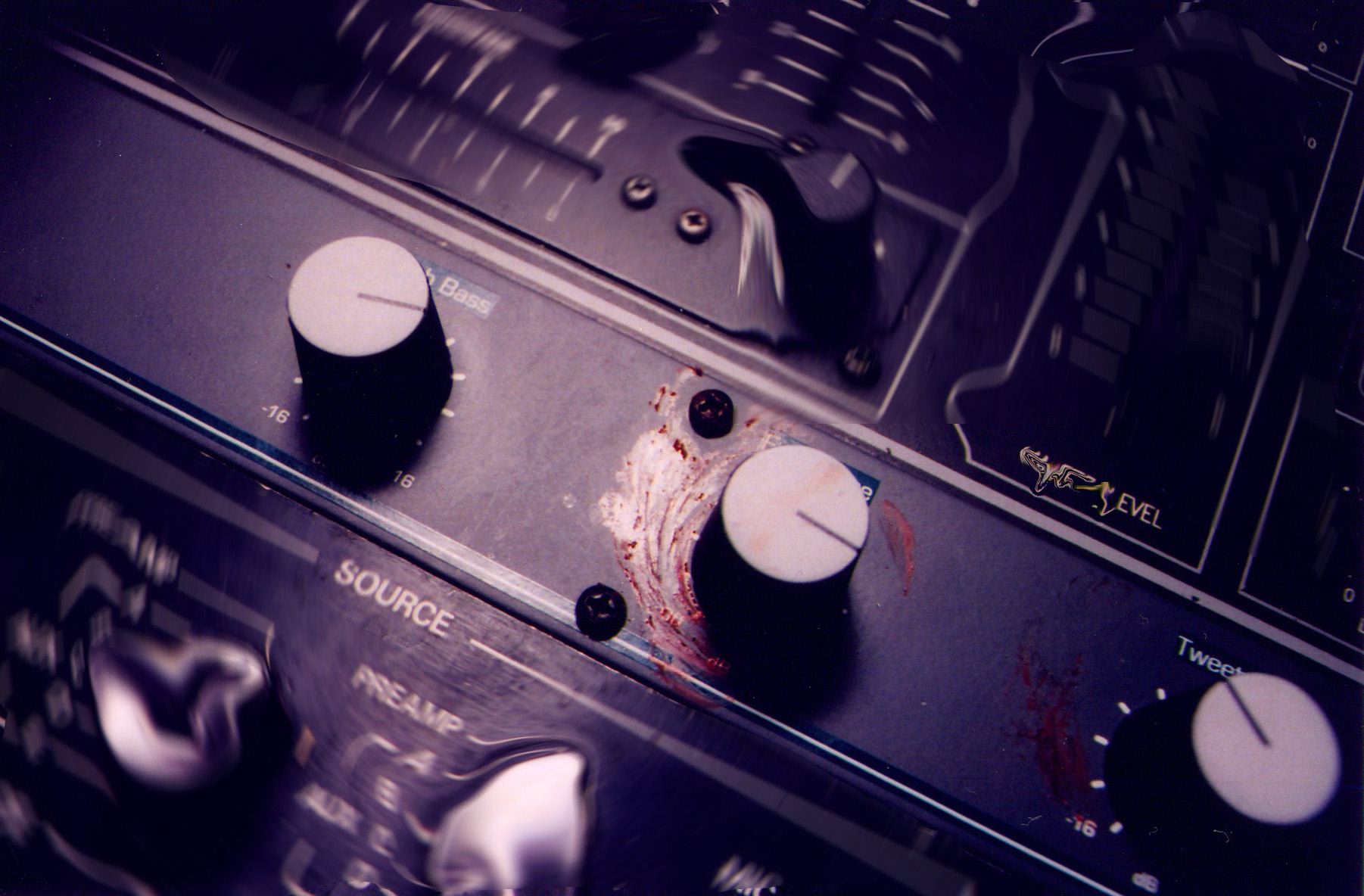It’s difficult for an audience in a club to know exactly what the DJ is manipulating at a given time and what’s already part of the track they’re playing. Too often I’ve heard someone on their way out of a club crying ‘the way that DJ remixed the new Britney was fiiierth!’ (or some variation) making it obvious that they believe DJs ‘remix’ songs on the spot, creating a new version of a song by laying an acapella over another track that they’re creating live. Nine times out of ten what’s happening is the DJ is simply playing a remix a producer slaved over in the studio for a few weeks…it’s just a remix that particular club-goer hadn’t heard before.
There are exceptions. Joe Claussell is a New York-based DJ who constantly manipulates the music he’s playing. He’ll often have a drum track looped while he twists a knob on his mixing desk in quick rhythmic stabs, teasing the crowd with chopped-up, filtered hints of a vocal track before bringing it in fully.
In Toronto, Deko-ze is a DJ I’ve watched keep four tracks running simultaneously, mixing and matching elements from all of them, looping a beat on a CD deck in front of him while reaching off the to side to nudge a record like a plate spinner sensing the need for a slight adjustment.
Some laptop DJs running Ableton Live are able to perform in a similar way because the software has the flexibility to loop a section of one track while the DJ chooses sections of other tracks to bring in, however the need to develop the physical skill of matching the speed of two tracks is eliminated because the software does it for them.
What the audience needs to understand is that a DJ spinning vinyl or CDs cannot separate individual parts of a track unless they’ve been supplied individually on a single or a bootleg. In other situations the best they can do is filter out the bass in a track to clear away some drums and expose the vocal a bit more, or filter out the treble to do the opposite. DJs that are acrobatic enough to have 2, 3 or 4 tracks spinning simultaneously are often layering drums on CD decks (they’re able load a perfectly looped section into memory), adding an acapella they obtained somewhere, and possibly adding musical elements from an instrumental mix of another track. It’s possible to go back and repeat a section of a vocal, or something relatively simple like that, but it’s difficult to apply rapid-fire effects to a vocal. Often you’re hearing something that’s on the acapella already, or the DJ has done some preparation of the track at home first.
What the great majority of DJs do is play one track after another, and the only time more than one element is being heard at the same time is while the DJ is fading from one track into the other, making use of the drums-only intros and outros tacked onto virtually every club track available today. Essentially, club tracks are designed like Lego blocks. The next one snaps onto the last one in most any configuration. It’s known as ‘Train Wrecking’ when a DJ messes up by letting two drum tracks get out of sync with each other while fading from one track to another…because, ostensibly, it sounds as messy as a train going off the tracks.
Club audiences have splintered into as many genres as house music has fractured into. And a DJ that only needs to play one genre, like dubstep or electro, doesn’t have to worry too much about the tracks they play being wildly different in tempo, rhythm or sonic range. Within this realm, the difference between a good DJ and a bad DJ is their taste in tracks, and their ability to read a crowd.
On the extreme side of DJ laziness is Israeli superstar DJ Offer Nissim, who is rumoured to put on a full-length CD created in the studio beforehand and pretend to mix all night from one track to another, collecting a $20k cheque at the end for showing up and ‘performing’!
In the early 90s, when turntables were the only sound source and DJs would begin a night with R&B and rap, progressing to house and eventually hard techno by the end of the night, the DJ had to work hard to learn what worked and what didn’t. Those turntables didn’t have as wide a pitch adjustment range as technology offers now, so beat-mixed music would have to change tempo incrementally over a few tracks.
Some all-but-lost creative mixing techniques include ‘braking’ (hitting the Stop button on the turntable to slow one track dead and then starting the next one, a technique used to start a set in a different tempo) and the ‘hard cut’ (where a DJ would surprise the crowd by cutting from one track directly into another). Hard cuts were sometimes necessary because tracks didn’t always begin with long drum intros…keyboard or acapella intros were acceptable on a 12″ version and this required the DJ to get a little creative.
One of my favourite creative mixes exists on a mixtape made by Toronto’s Patrick ‘D-Nice’ Hodge in 1992. It’s somewhere between a regular crossfade and a hard cut:
At 0:23 the piano riff that comes in is from the next record, ‘Back To Me’ by Ubiquity. This riff is in the same key as the previous record, and it works beautifully with the existing chord progression we’ve been listening to. At 0:31 he drops the first record entirely, as the beat comes in on the new record. The fact that he recognized these two records in his crate would work together in this way is one of those happy accidents that happen increasingly often the more attuned a DJ gets to his material. The second track coming in, by the way, is just slightly flat, because at that time in order to line up the tempo of two recordings, the original pitch of the recordings would slide around as necessary. That’s no longer an issue with CD decks and laptops.
I still don’t know what track Patrick was mixing out of here. If anyone can identify it, please hit me with an e-mail.
Continuing back in time to the mid-70s when DJs like Tom Moulton in New York discovered disco’s relentless ‘4-on-the-floor’ kick drum pattern, the concept of beat-matching two tracks while mixing from one to the other was born. It’s worth mentioning that at that time there were even greater physical challenges for the DJ. Most of these tracks were not recorded at a stable tempo, so the DJ was constantly adjusting the turntable to keep the beat aligned, especially if they were trying to keep two songs running together for more than a few seconds. DJ turntables with convenient pitch sliders and robust tonearms/needles hadn’t been developed yet and neither had 12″ singles with extended versions that had long drum breaks for mixing.
Moulton was reportedly the first DJ to make long versions of his favourite songs by editing them on reel to reel tape and bringing the machine to the club that night. Some of his re-edits were later released by the original labels. I also have it on good authority that at Studio 54, staples like ‘Come To Me’ by France Joli would be extended manually by the DJ by mixing back and forth between two copies of the same record. DJing was a highly physical act at the time, and within the technical limitations there was quite a bit of creativity going on.


#1 by Jeff Stiles on May 28, 2009 - 1:49 pm
Nice overview. Takes some of the mystery out of the process.
#2 by Mark Neukom on June 1, 2009 - 4:18 pm
as with everything creative once you’ve mastered the art you can increasingly manipulate it to what your imagination envisions……. DJings come a long way from those days of two turntables and a microphone…. soon enough someone’s just going to bring their laptop with wireless card and stream a mix from somewhere else…. lol
#3 by Tigon on September 16, 2009 - 1:21 am
Nice run down, but please don’t compile all djs into the category of playing the ‘Lego block’ formula of mixing track after track waiting for the intro/outro.
There’s far more to the art of modern mixing than you’ve outlined here. Good DJs, even when utilizing modern technology (not the good ol Technics 1200s, like many still do) strive to push the art mixing tracks less than half way done with another track starting somewhere in the middle (thus eliminating the intro/outro formula you gave) to create a ‘double drop’ where two songs come out of a break down, build together and drop back in unison which creates a ton of energy on the dancefloor. Likewise, careful selection of where to drop in a track (not just the intro/outro) and tight beat matching can allow for two tracks to play together for an extended period of time (2+ minutes) and have them alternate which ‘kick’ is playing and which track is in a breakdown with only its bridge.
You wanna be impressed by a live DJ, check out DJ Flave out of Seattle. This cat still plays vinyl on the technics 1200s, will change tempo throughout his set, can scratch with his TOE and… if you’re lucky, he might just break out his saxophone.
Real, artistic DJs still exist. But they reside where they always have… in the underground, not in your average clubs.
-Tigon
#4 by DJ Headphones Tips on September 29, 2009 - 10:57 pm
Thank you very much for htis informative article. Now I know more about the world of DJ’s..